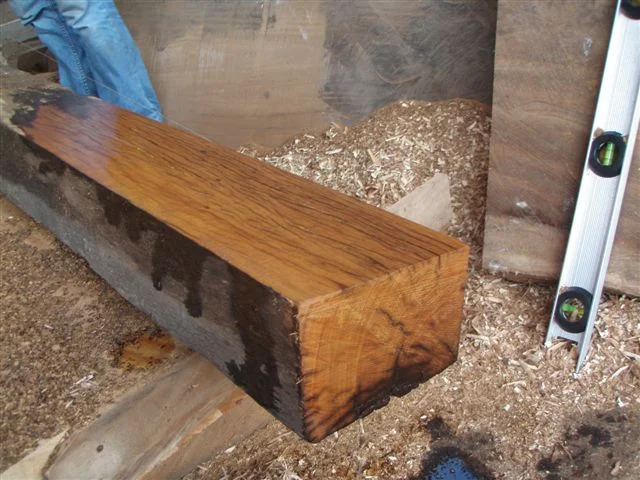Often, when I tell people I am in the reclaimed wood business, the response I get is, “Oh, you mean like barn wood? And then I have to explain. Which is why I am writing this. In the hope that someone who reads it will be one less person to whom I won't have to explain it to someday in the future.
Yes, when most people think of reclaimed wood they think rustic, funky, grey, weathered and rough. Pretty much the opposite of modern, clean, sophisticated, smooth and finished.
The truth is, all of the above are possible with reclaimed. While it is true that most reclaimed wood installations have some evidence of prior use, such as nail holes, oxide stains or wine or brine stains, a very clean and modern aesthetic is totally achievable with most varieties of reclaimed.
The fundamental characteristic if reclaimed wood is that it is actually not much different from new wood, except that it is dry, stable, dense, has some fastener marks / holes in it and (this is key) it has surface fading caused by exposure to the suns ultraviolet radiation. This fading can take the form of very slight color changes as in the case of interior flooring, paneling or cabinetry. Or it can manifest as a completely grey appearance as is the case with barn siding or other exterior applications.
The big not so secret trade secret of the reclaimed wood industry is that this face fading is just that. It’s on the surface. Back in the day when I was often found escorting prospective clients around our sawmill and wood shop, my favorite sales demonstrations was to pick up a random, ratty looking piece of scrap wood off the ground and have the guest follow me into the shop where I would run it through the planer and take off maybe 1/8” and watch their jaw hit the floor as the like new surface emerged from the outfeed of the planer. It was a demonstration that spoke volumes and I used it often and to great effect.
We are able to accomplish the same effect on a much larger scale in our re-manufacturing process. One of the most challenging aspects of the business for our sales and marketing folks is educating people about the many aesthetic possibilities of reclaimed wood.
Of course, there are limitations. I used to turn away those who insisted that wanted to do the right thing for the planet by using reclaimed wood but they want perfect, flawless, clear, vertical grain wood with no character marks. I would politely inform them that no, they didn’t really want reclaimed wood, they wanted new wood from old growth trees. Can’t have it both ways. But at the end of the day, most of the projects that our reclaimed product have made their way into have not been a rustic or weathered look, but rather a more elegant and sophisticated look, with character.
written by Richard McFarland-Dorworth

